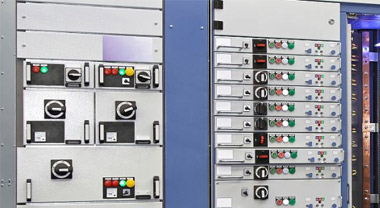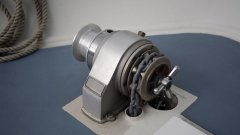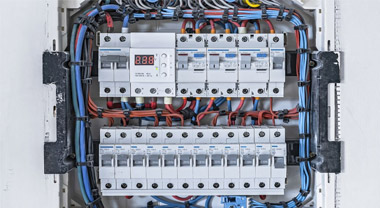2023 How to Find What Is Tripping My Circuit Breaker?
1. Introduction
Circuit breaker tripping is a common issue faced by many homeowners. The primary function of a circuit breaker is to protect your home's electrical system by shutting off power to a circuit when it detects a problem. Identifying and resolving the cause of circuit breaker tripping is essential for maintaining the safety and functionality of your electrical system. In this article, we will explore common causes of circuit breaker tripping and provide guidance on how to troubleshoot and resolve these issues.
1.1. Overview of circuit breaker tripping issues
Circuit breakers can trip for a variety of reasons, including overloaded circuits, short circuits, ground faults, or faulty breakers. Identifying the specific cause of the tripping is crucial for addressing the issue and preventing further problems.
1.2. Importance of identifying and resolving the cause
Resolving the cause of circuit breaker tripping not only restores power to the affected circuit but also helps ensure the safety of your home and its occupants. Unaddressed electrical problems can lead to fires, equipment damage, or personal injury, making prompt troubleshooting and repair a top priority.
2. Safety Precautions
Before investigating the cause of circuit breaker tripping, it is essential to follow safety precautions to protect yourself from potential harm. Electricity can be dangerous, and caution must be exercised when working with electrical components.
2.1. Disconnecting power before investigating
Always disconnect power to the affected circuit or the entire electrical panel before conducting any inspection or repair. This can be done by switching off the main circuit breaker or the individual circuit breaker for the affected circuit.
2.2. Using appropriate tools and protective gear
Use insulated tools and wear protective gear, such as rubber gloves and safety goggles, to minimize the risk of electric shock or injury while working with electrical components.
3. Common Causes of Circuit Breaker Tripping
There are several common reasons why a circuit breaker may trip. Understanding these causes can help you pinpoint the source of the issue and determine the appropriate steps to resolve it.
3.1. Overloaded circuits
An overloaded circuit occurs when the total electrical load on a circuit exceeds its capacity. This can cause the circuit breaker to trip as a safety measure to prevent overheating and potential damage to your electrical system. Common causes of overloaded circuits include the use of multiple high-wattage appliances on the same circuit or faulty appliances that draw excessive current.
3.2. Short circuits
A short circuit occurs when an electrical current flows along an unintended path, usually due to damaged wiring, faulty connections, or malfunctioning appliances. Short circuits can cause a sudden and significant increase in current, causing the circuit breaker to trip in order to prevent potential fires or damage to the electrical system.
3.3. Ground faults
Ground faults occur when electrical current leaks from a circuit and flows into the ground, typically due to damaged wiring or faulty electrical devices. Like short circuits, ground faults can cause an increase in current, leading to the tripping of the circuit breaker as a safety measure.
3.4. Faulty or damaged circuit breakers
Occasionally, the circuit breaker itself may be the cause of the tripping. Breakers can become damaged, worn, or defective over time, leading to their inability to perform correctly. In such cases, the breaker may trip even when there are no issues with the electrical system or devices on the circuit.
3.5. Aging or damaged wiring
Wiring in your home can deteriorate over time, especially if it is exposed to moisture, pests, or extreme temperature fluctuations. Damaged or aging wiring can result in a variety of electrical issues, including circuit breaker tripping, and may pose a safety hazard if left unaddressed.
4. Investigating the Cause of Circuit Breaker Tripping
Once you have a general understanding of the common causes of circuit breaker tripping, you can begin to investigate and pinpoint the specific cause affecting your home's electrical system.
4.1. Identifying the affected circuit
Determine which circuit in your home is affected by the tripping breaker. This can often be done by referencing the labels on your electrical panel or by checking which rooms, outlets, or appliances lose power when the breaker trips.
4.2. Inspecting the circuit for signs of damage or wear
Visually inspect the wiring, outlets, and switches on the affected circuit for signs of damage, such as frayed wires, burned marks, or discolored components. Any visible signs of damage may indicate the presence of short circuits or ground faults that need to be addressed.
4.3. Evaluating appliances and devices on the circuit
Assess the appliances and devices connected to the affected circuit to determine if they may be causing an overload or other issues. Check for any malfunctioning devices, or consider whether the combined electrical load of the appliances on the circuit may be exceeding its capacity.
5. Troubleshooting Techniques
Based on your investigation, you can now employ various troubleshooting techniques to identify and resolve the cause of the circuit breaker tripping. The specific approach will depend on the suspected cause of the issue.
5.1. Resolving overloaded circuits
If you believe the cause of the circuit breaker tripping is an overloaded circuit, consider the following steps to resolve the issue:
5.1.1. Reducing power usage
Unplug unnecessary appliances or devices from the circuit, or shift some to different circuits to balance the electrical load. Avoid using multiple high-wattage appliances simultaneously to prevent overloading the circuit.
5.1.2. Adding additional circuits
If reducing power usage is not feasible or the problem persists, consider consulting a professional electrician to add additional circuits to your electrical system. This can help distribute the electrical load more evenly and prevent future overloads.
5.2. Identifying and fixing short circuits
If you suspect that a short circuit is causing the breaker to trip, follow these steps to identify and fix the issue:
5.2.1. Visual inspection of wiring and outlets
Inspect the wiring, outlets, and switches on the affected circuit for signs of damage, such as frayed wires, burn marks, or discolored components. Damaged components should be repaired or replaced as needed.
5.2.2. Isolating the source using a systematic approach
Unplug all devices from the circuit and reset the breaker. If the breaker still trips, the issue is likely with the wiring or electrical components. If the breaker does not trip, plug each device back in one by one, testing the breaker after each addition. This will help you identify the specific device or component causing the short circuit, which can then be repaired or replaced as needed.
5.3. Detecting and correcting ground faults
If ground faults are the suspected cause of circuit breaker tripping, follow these steps to identify and correct the issue:
5.3.1. Inspecting outlets and wiring for ground faults
Examine the outlets and wiring on the affected circuit for signs of damage or wear, such as exposed or frayed wires, burn marks, or discoloration. Repair or replace any damaged components as needed.
5.3.2. Installing Ground Fault Circuit Interrupters (GFCIs)
Install GFCI outlets or GFCI breakers to protect against ground faults. These devices are designed to detect and interrupt ground faults quickly, preventing circuit breaker tripping and reducing the risk of electrical shock. Consult a professional electrician if you are unsure how to install GFCIs correctly.
5.4. Evaluating circuit breaker condition
If you suspect that the circuit breaker itself is faulty or damaged, follow these steps to evaluate its condition:
5.4.1. Inspecting for signs of damage or wear
Examine the circuit breaker for any visible signs of damage or wear, such as charring, cracks, or discoloration. If any damage is observed, the breaker should be replaced.
5.4.2. Testing breaker functionality
Test the breaker's functionality by resetting it and monitoring its performance. If the breaker continues to trip without an apparent cause, it may need to be replaced. Consult a professional electrician if you are uncertain about the breaker's condition or how to replace it safely.
5.4.3. Replacing faulty or damaged breakers
If the breaker is determined to be faulty or damaged, replace it with a new, appropriately rated breaker. Ensure that the replacement breaker is compatible with your electrical panel and complies with local electrical codes.
5.5. Assessing and repairing damaged wiring
If aging or damaged wiring is the suspected cause of circuit breaker tripping, follow these steps to address the issue:
5.5.1. Identifying damaged or aging wiring
Inspect the wiring in your home for signs of damage or wear, such as exposed or frayed wires, discoloration, or brittle insulation. Damaged wiring should be repaired or replaced to prevent further issues and ensure the safety of your electrical system.
5.5.2. Repairing or replacing damaged wiring
Repair or replace any damaged wiring as needed, ensuring that all connections are secure and properly insulated. In some cases, it may be necessary to consult a professional electrician to complete this work, especially if the wiring is extensive or difficult to access.
6. Preventive Measures to Avoid Future Tripping
To minimize the risk of circuit breaker tripping and ensure a safe and efficient electrical system in your home, consider the following preventive measures:
6.1. Regular Electrical System Maintenance
Conduct routine inspections and maintenance of your home's electrical system to identify and address any signs of damage, wear, or aging components. Proactive care helps maintain the safety and functionality of your electrical system.
6.2. Upgrading Outdated Electrical Systems
Replace older or outdated electrical components, such as wiring, outlets, and circuit breakers, with modern alternatives that meet current safety standards. Upgrading your electrical system can help prevent circuit breaker tripping and reduce the risk of electrical issues.
6.3. Proper Usage of Electrical Appliances and Devices
Ensure that electrical appliances and devices are used correctly and according to manufacturer guidelines. Avoid overloading circuits and distribute electrical loads evenly to minimize the chances of circuit breaker tripping.
7. When to Call a Professional Electrician
In some cases, it may be necessary to consult a professional electrician to identify and address the cause of circuit breaker tripping. Seek professional assistance in the following situations:
7.1. Persistent or Unexplained Breaker Tripping
If your circuit breaker continues to trip frequently or without an apparent cause, contact a professional electrician to evaluate the issue and provide appropriate solutions.
7.2. Signs of More Extensive Electrical Issues
When you encounter signs of more extensive electrical problems, such as damaged wiring, burning smells, or flickering lights, consult an electrician. These symptoms may indicate potentially dangerous electrical issues that require expert attention.
7.3. Adhering to Local Electrical Codes and Regulations
Professional electricians can ensure that any electrical work, repairs, or upgrades comply with local electrical codes and regulations. This is particularly important when installing new circuits, rewiring your home, or upgrading electrical components.
8. Conclusion
By implementing the suggested troubleshooting techniques and preventive measures, you can effectively address the issue of circuit breaker tripping and maintain a safe and efficient electrical system in your home. It is essential to resolve tripping issues for the safety and functionality of your home's electrical system. When in doubt, or when faced with persistent or more extensive electrical issues, don't hesitate to contact a professional electrician to provide expert assistance and ensure compliance with local codes and regulations.




